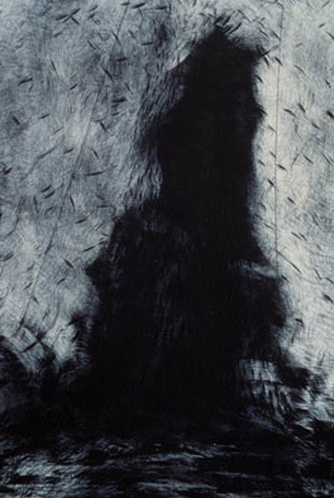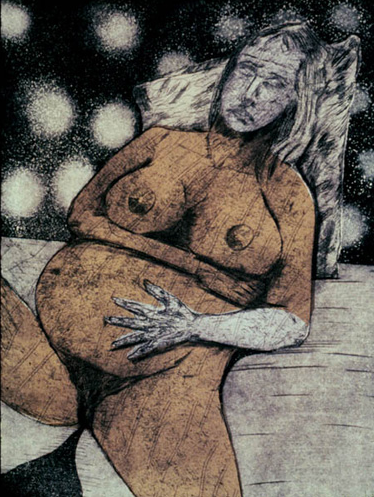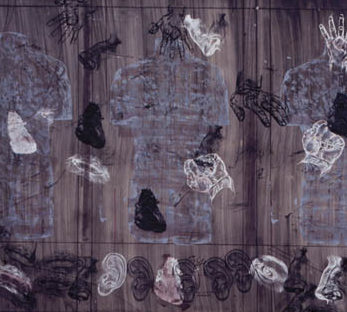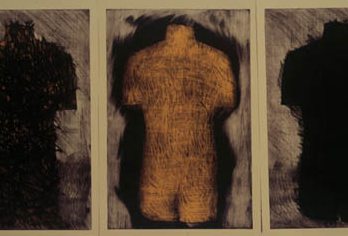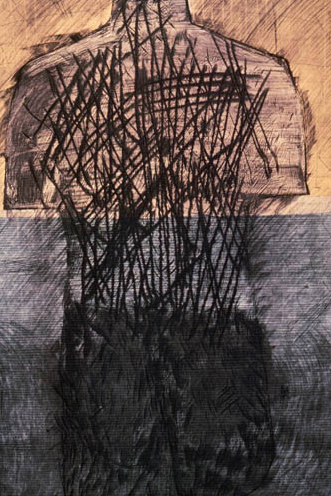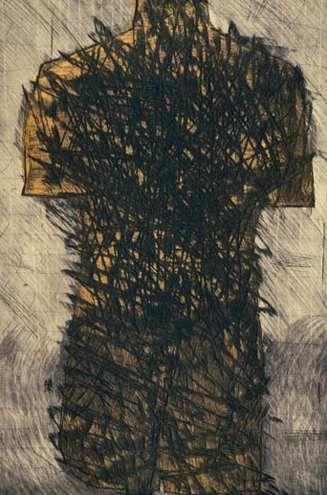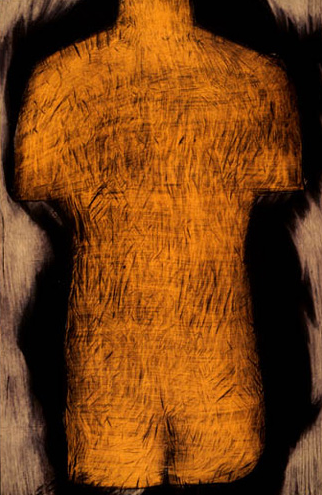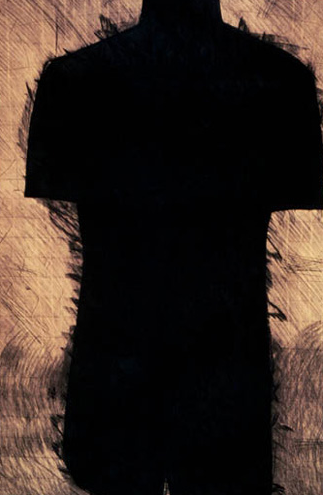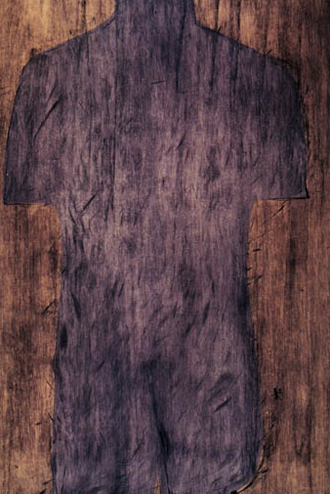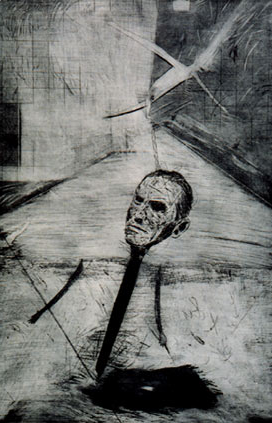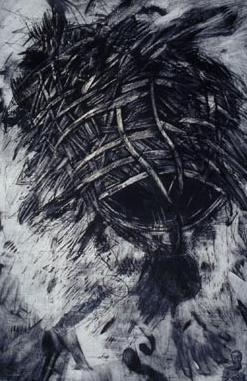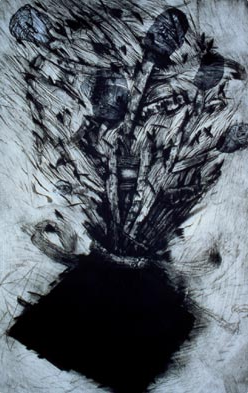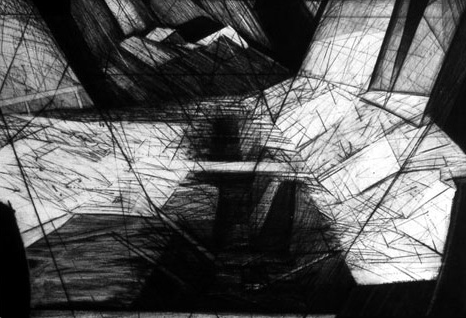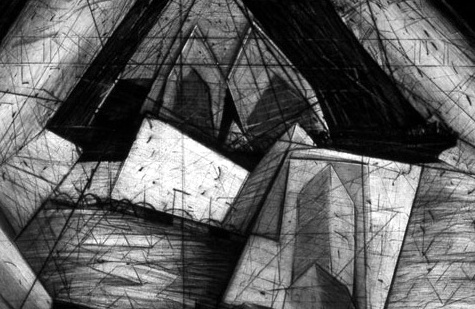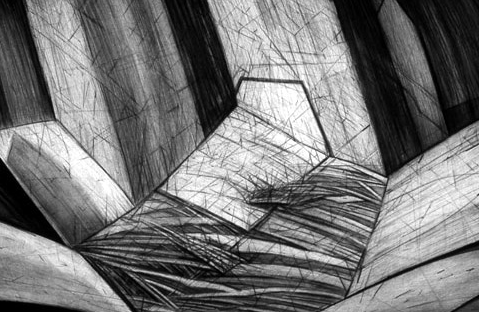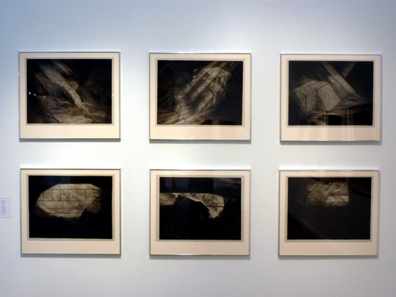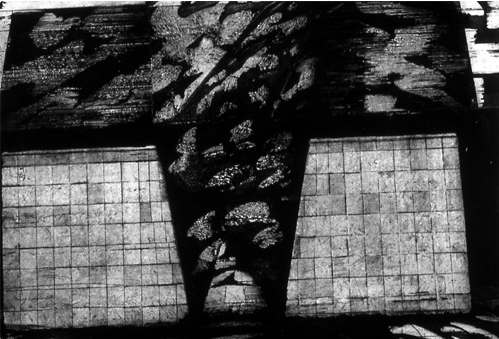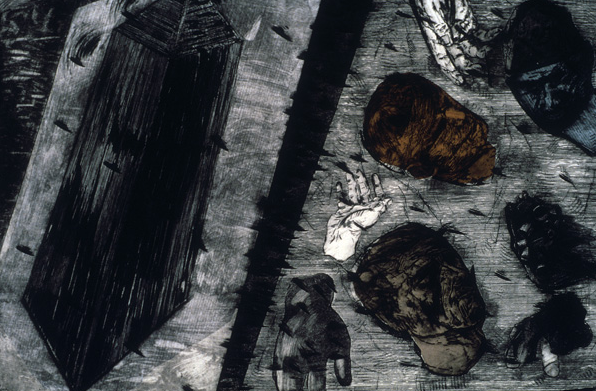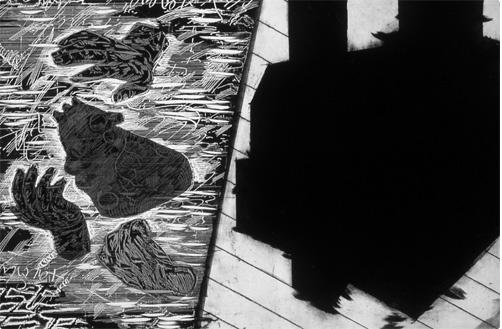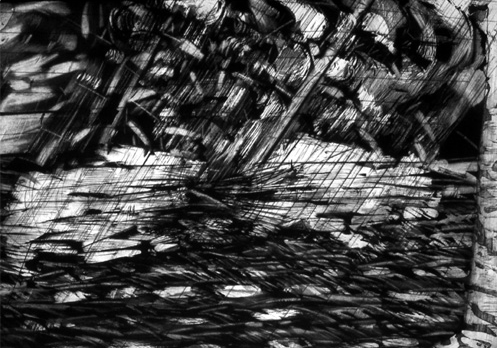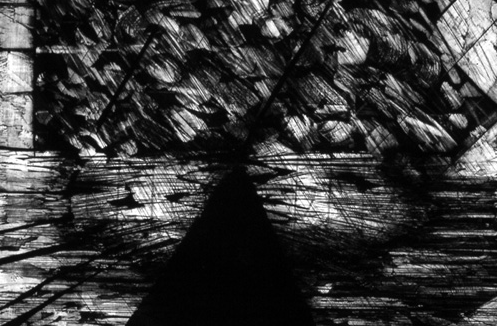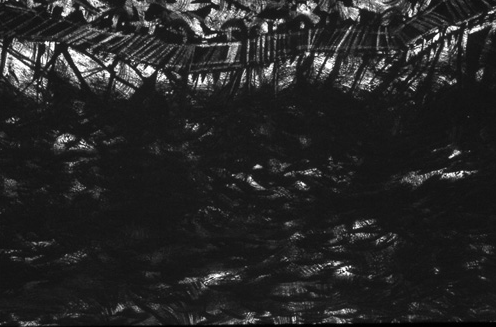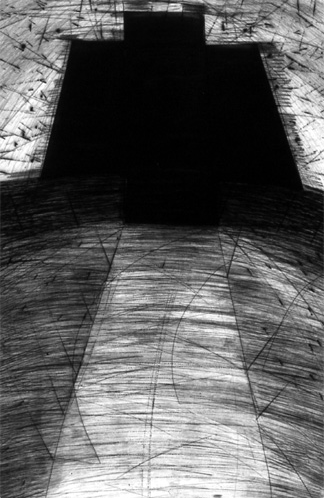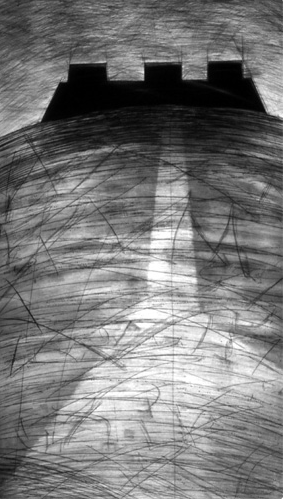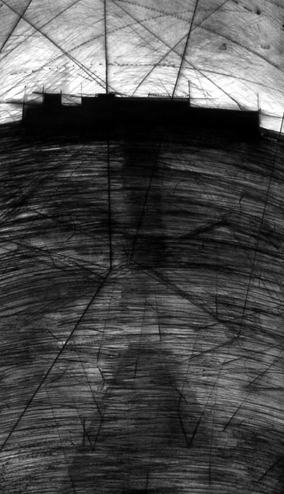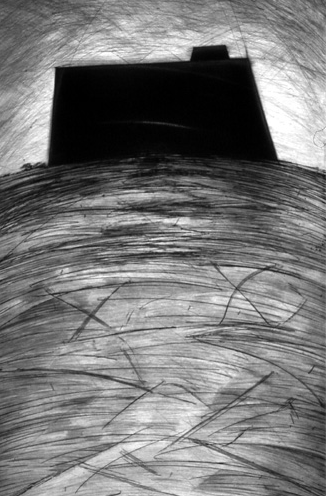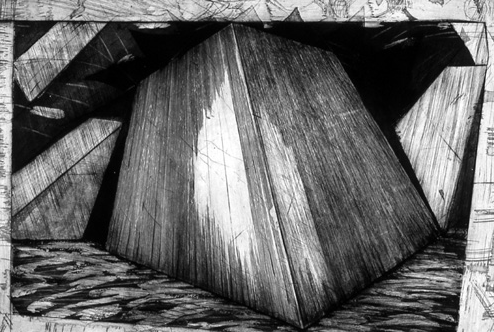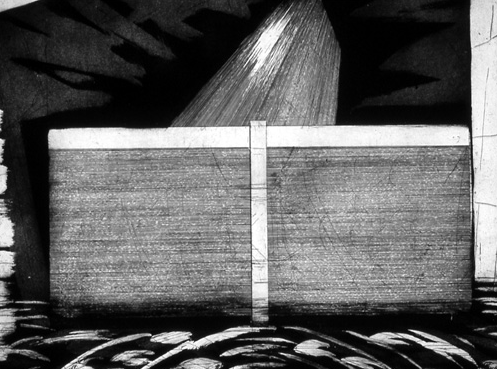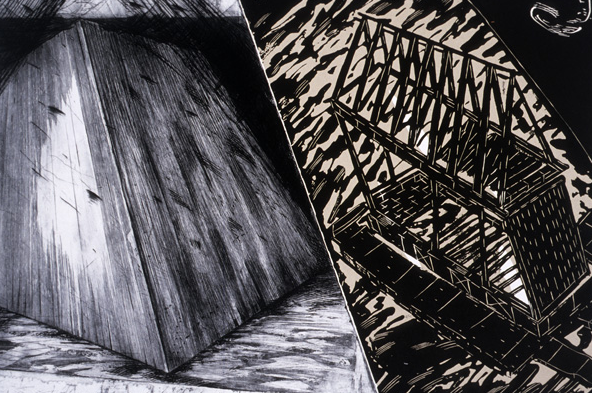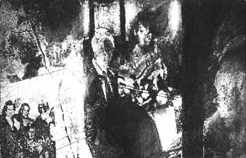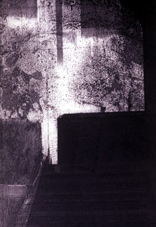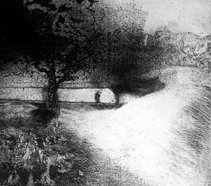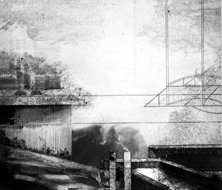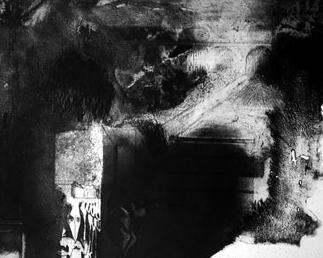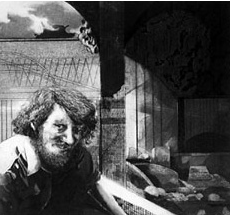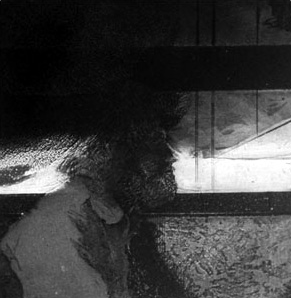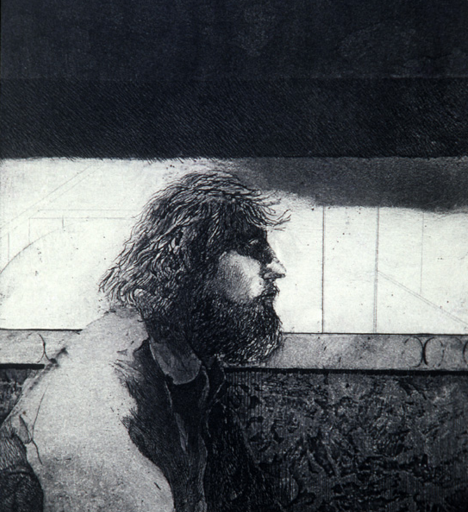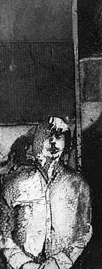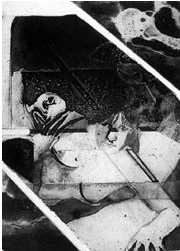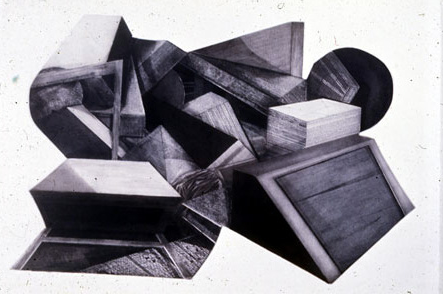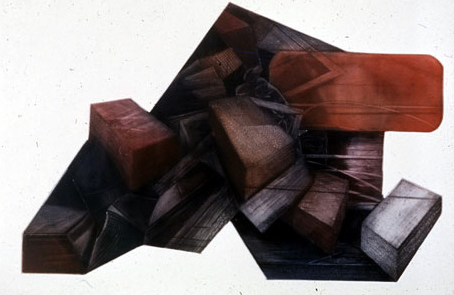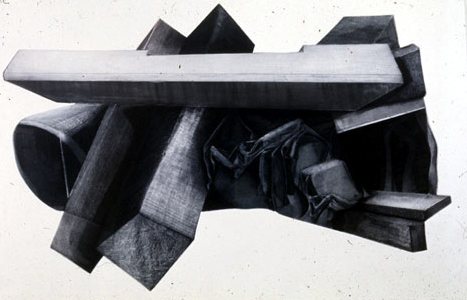House of Knowledge
The sequential etchings the house of knowledge were made at the Guanlan Printmaking Baaed in Shenzhen China 2014. They were based on Evan Summers print made there titled Small house. Evan and I were at Yale together and our work has had some cross overs but his is much more highly crated and envisioned than mine and mine are more made in the physical process of ripping into the plate.
lucky dragon
The Lucky Dragon was a Japanese fishing vessel. In 1954, in search of new tuna fishing grounds the Lucky Dragon cast her nets 80 miles from an American hydrogen bomb test. The boat and crew were caught in a snow storm of hot radioactive coral flakes. The story of the crew became one small event in the movement to ban testing of nuclear weapons.
Artist Statement:
THE LUCKY DRAGON SUITE; POWER AND INDIVIDUAL PERCEPTION
The Lucky Dragon Suite is not meant to examine and criticize the relationships of power in a documentary format. Its nature is more subtle and individualized. It is my necessity to make images that are both a reaction to power, as well as the essence of my own creative studio gesture, an intuitive sensitivity built up over years of studio work. This process provides me and numerous other artists with a voice. A voice that speaks of our social and political concerns through the poetics of the studio gesture. It is like no other form of expression. It is the essence of freedom. It records our concerns through expression, and sensibility. (Jun Quick To See Smith's painting of the early 1980's are a good example of this process of combining gesture and commentary.) The significance of these images is not reduced because of the modesty of their effect on events. That is not the role of The Lucky Dragon Suite. Its validity and significance comes in power and history being both confronted and individualized. The work produces a testament of individual perception, personal experience, confrontation, criticism, hope and anger.
LUCKY DRAGON SUITE
In 1985 an exhibition of my work was organized by George McKenna, Curator of Prints, Drawing and Photographs at the Nelson-Atkins Museum of Art in Kansas City, Missouri. The exhibition featured a sequential series of etchings, The Lucky Dragon Suite. This suite of prints was based on an incident in which a crew of Japanese fishermen were unwittingly exposed to an America hydrogen bomb test in the mid 1950's. Altering a 24"x 36" zinc etching plate, I pulled one print a day then changed the plate pulling a new impression. Only one impression of each state exists. The impressions are monotypes; all changes were made by physically altering the plate. The plate was worked on for over 70 days producing 70 unique impressions which were edited into a series of 35 images. I discovered in the sequential process a mechanism for rethinking, reinvestigation, flux, and continuation. This process records and documents my studio narrative. The studio narrative is the act of making and remaking. It records both the changes in the material and the interaction between myself and the subject.
These prints have been re-edited into a series of 20 impressions, which make up the final series The Lucky Dragon Suite. They have been purchased by Nick Jannes of Chicago in October of 1994.
due unto
Due Unto is a sequential series of etchings based on the lives of women in the sex industry, prostitutes, massage parlor employs and dancers. The series is based on the lives and reflections of women I have know and of writings of women I have never met. The prints are exhibited on individual shelves so that the audience looks down on them. They rest in a horizontal position against the gallery wall. Included in the series are portraits of four pregnant prostitutes. Under each portrait is a fragment of a dialogue.
I decided to become a prostitute at 19; why give it away for dinner and drinks.
Yes, even my stepfather…
I can't make this kind of money for my kids in an office.
Yea girlfriend! and watch out for the boss.
In gold engraved lettering on plaques above the horizontally exhibited prints is this statement: If a man sell my body its called porno and protected by the first amendment if I sell my body its prostitution and jail.
torso
Torso is a series of 9 stages of a sequential etching 24"x36". I had recently read the book The Body in Painby E. Scarry describing how people are tortured. The book covered the physiological and physical abuse that prisoners face. I began with a drawing from an old anatomy book of a headless torso and preceeded to beat, grind and attack the image transforming it. What frightened me was that in my "abuse" of the image it became more beautiful, I showed the work once at the Leedy Voulkos Art Center then put the series away and have not seen it since 1991.
facts of fiction
The first step is creating a form to fill the void of the surface of the plate. drawing a construct that fills the picture plane. This constructive process of drawing is equivalent to engineering planning projecting it is man controlling and readapting the environment to establish a social and cultural process that is primary.
The destruction and distortion of this construct through the process of acid attacking metal is both the entropy that causes decay in all things and the reclamation of the natural process over the built environment. As in Durer's Melancholia, the sequence of images is representative of the finite quality of individual lives and of material. The continuation of the series on a new surface speaks about the infinite images produced by the individual imagination memory the nature of creativity and ideas to continue beyond their time.







